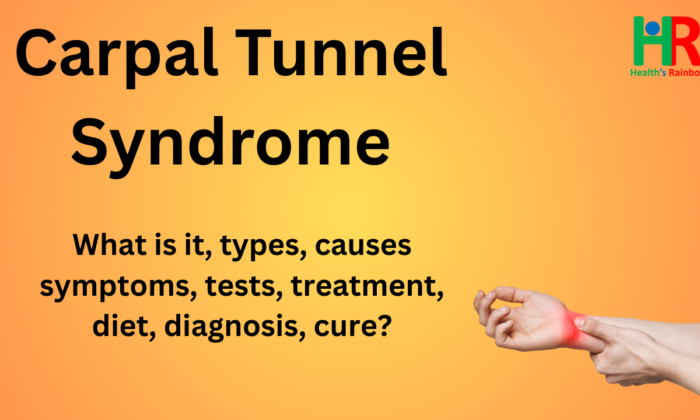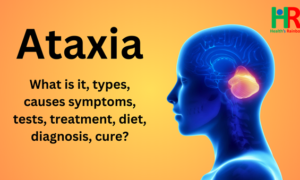
Definition of Carpal Tunnel Syndrome
Carpal Tunnel Syndrome is a condition characterized by pressure on the median nerve as it passes through the carpal tunnel in the wrist. This narrow tunnel is formed by the carpal bones at the bottom and the strong transverse carpal ligament across the top. When tissues within this tunnel swell or the tunnel itself narrows, it puts pressure on the median nerve, leading to its dysfunction.
Types of Carpal Tunnel Syndrome
While there aren’t distinct “types” of Carpal Tunnel Syndrome in the same way as, say, different diseases, it can be categorized by its severity and progression:
- Mild Carpal Tunnel Syndrome: Symptoms are intermittent, often occurring at night or with specific activities. There might be tingling or numbness, but little to no weakness.
- Moderate Carpal Tunnel Syndrome: Symptoms are more frequent and persistent, occurring during the day as well. Some weakness or difficulty with fine motor tasks might be present.
- Severe Carpal Tunnel Syndrome: Symptoms are constant, including significant numbness, pain, and noticeable weakness in the hand, potentially leading to muscle wasting at the base of the thumb (thenar atrophy).
Symptoms of Carpal Tunnel Syndrome
Symptoms of Carpal Tunnel Syndrome usually develop gradually and can include:
- Tingling and Numbness: Often described as “pins and needles” or an “electric shock” sensation, primarily in the thumb, index, middle, and half of the ring finger. The little finger is typically unaffected. These sensations often worsen at night, waking individuals from sleep, or during activities like driving, holding a phone, or reading a book.
- Pain: Aching, burning, or throbbing pain in the hand, wrist, and sometimes radiating up the forearm towards the shoulder or neck.
- Weakness: Difficulty gripping objects, dropping things, or performing fine motor tasks due to numbness or weakness in the muscles controlled by the median nerve (especially the thumb’s pinching muscles).
- Swollen Feeling: Despite no visible swelling, fingers may feel swollen or stiff.
- Sensory Changes: In severe cases, difficulty distinguishing hot from cold or reduced touch sensitivity in the affected fingers.
Causes of Carpal Tunnel Syndrome
Carpal Tunnel Syndrome is caused by increased pressure within the carpal tunnel, which then compresses the median nerve. Often, no single cause is identified, but rather a combination of factors:
- Anatomical Factors:
- Smaller Carpal Tunnel: Some people naturally have smaller carpal tunnels, which can be inherited. Women are generally more prone due to smaller average carpal tunnel size.
- Wrist Fractures or Trauma: Injuries to the wrist can narrow the tunnel.
- Arthritis: Conditions like rheumatoid arthritis or osteoarthritis can cause inflammation and changes in the bones and joints of the wrist, putting pressure on the nerve.
- Swelling and Inflammation:
- Repetitive Hand Movements: Frequent, repetitive flexing or extending of the wrist (e.g., typing, assembly line work, using vibrating tools) can irritate tendons, causing swelling.
- Fluid Retention: Hormonal changes, particularly during pregnancy, menopause, or from conditions like thyroid imbalance or kidney failure, can lead to fluid retention and increased pressure within the tunnel.
- Medical Conditions:
- Diabetes: Can cause nerve damage (neuropathy) and increase the risk of CTS.
- Hypothyroidism: Underactive thyroid can lead to fluid retention and swelling.
- Autoimmune Disorders: Such as rheumatoid arthritis, which causes joint inflammation.
- Obesity: Increased body mass index is a risk factor.
- High Blood Pressure: Can be associated with an increased risk.
- Other Factors:
- Cysts or Tumors: Rarely, growths within the tunnel can compress the nerve.
- Certain Medications: Some drugs can contribute to fluid retention or nerve issues.
Who Can Suffer from Carpal Tunnel Syndrome?
Carpal Tunnel Syndrome can affect anyone, but some groups are at higher risk:
- Women: Three times more likely to develop CTS than men, often due to smaller carpal tunnel size and hormonal factors (e.g., pregnancy, menopause).
- Adults aged 30-60: Most commonly diagnosed in this age range.
- Pregnant Individuals: Fluid retention during pregnancy frequently causes temporary CTS, which often resolves after delivery.
- Individuals with Certain Occupations: Jobs involving repetitive hand/wrist motions, forceful gripping, or vibrating tools (e.g., assembly line workers, typists, construction workers, musicians).
- People with Underlying Medical Conditions: Such as diabetes, rheumatoid arthritis, or thyroid disorders.
- Those with a Family History: Genetic predisposition can play a role.
Diagnostic Tests for Carpal Tunnel Syndrome
Diagnosis typically involves:
- Medical History and Physical Examination: A detailed review of symptoms, medical history, and a physical exam to assess sensation, strength, and identify any signs of muscle wasting.
- Tinel’s Sign: Tapping lightly over the median nerve at the wrist. A positive sign elicits tingling or “pins and needles” in the fingers.
- Phalen’s Maneuver: Holding the wrists in a fully flexed position (backs of hands pressed together) for about a minute. A positive sign is the onset or worsening of symptoms.
- Nerve Conduction Studies (NCS): Electrodes are placed on the hand and wrist to measure the speed of electrical impulses through the median nerve. Slowed conduction through the carpal tunnel indicates compression.
- Electromyography (EMG): A thin needle electrode is inserted into muscles controlled by the median nerve to assess their electrical activity. This can help determine if there’s muscle damage.
- Imaging Tests:
- Ultrasound: Can visualize the median nerve and surrounding tissues for swelling or compression.
- X-rays: Not typically used to diagnose CTS itself, but can rule out other causes of wrist pain like fractures or arthritis.
- MRI: Rarely used for CTS diagnosis, but may be considered in complex cases or to rule out other nerve compression issues.
Stages of Carpal Tunnel Syndrome
As mentioned above, CTS is often described in terms of severity rather than distinct stages, as its progression can be gradual and variable:
- Early/Mild: Intermittent numbness/tingling, often at night, relieved by shaking the hand.
- Moderate: More frequent symptoms, including daytime involvement, some weakness.
- Severe/Advanced: Constant numbness/pain, significant weakness, muscle atrophy at the thumb base, difficulty with daily tasks. If left untreated, severe cases can lead to permanent nerve damage.
Treatment of Carpal Tunnel Syndrome
Treatment aims to reduce pressure on the median nerve and alleviate symptoms. Options range from conservative measures to surgery:
- Non-Surgical Treatments (often first-line for mild to moderate cases):
- Rest and Activity Modification: Avoiding activities that worsen symptoms, taking frequent breaks.
- Wrist Splinting: Wearing a splint, especially at night, to keep the wrist in a neutral position and reduce pressure on the nerve.
- Over-the-Counter Pain Relievers: NSAIDs (e.g., ibuprofen) can help with pain and inflammation, but don’t address the underlying compression.
- Corticosteroid Injections: A steroid injected directly into the carpal tunnel can reduce swelling and inflammation, providing temporary relief.
- Physical or Occupational Therapy: Exercises to improve wrist and hand mobility, nerve gliding exercises, and ergonomic adjustments.
- Treating Underlying Conditions: Managing diabetes, thyroid disorders, or other systemic diseases.
- Surgical Treatment:
- Carpal Tunnel Release Surgery: Recommended for severe cases or when conservative treatments fail. The surgeon cuts the transverse carpal ligament, which creates more space for the median nerve. This can be done via:
- Open Surgery: A small incision in the palm.
- Endoscopic Surgery: Using a small camera and instruments through one or two smaller incisions.
- Both methods are highly effective. Recovery involves soreness and weakness, gradually improving over weeks to months.
- Carpal Tunnel Release Surgery: Recommended for severe cases or when conservative treatments fail. The surgeon cuts the transverse carpal ligament, which creates more space for the median nerve. This can be done via:
Best Diet for Carpal Tunnel Syndrome
While no specific “CTS diet” exists, a balanced diet can support overall nerve health and reduce inflammation:
- Anti-Inflammatory Foods: Incorporate foods rich in omega-3 fatty acids (fatty fish, flaxseed), antioxidants (fruits, vegetables), and whole grains.
- Vitamins and Minerals: Ensure adequate intake of B vitamins (especially B6, though excessive B6 can be harmful), magnesium, and vitamin D, which are important for nerve function.
- Limit Processed Foods, Sugary Drinks, and Unhealthy Fats: These can promote inflammation.
- Hydration: Staying well-hydrated is always important for overall health.
Prevention of Carpal Tunnel Syndrome
While not always entirely preventable, several strategies can reduce the risk or alleviate symptoms:
- Ergonomic Adjustments: Ensure proper workstation setup, including keyboard and mouse position, to keep wrists in a neutral, straight position.
- Frequent Breaks: Take short, regular breaks from repetitive tasks to stretch and move hands and wrists.
- Relaxed Grip and Reduced Force: Avoid gripping objects too tightly or exerting excessive force.
- Maintain Good Posture: Poor posture can affect nerve pathways leading to the arms and hands.
- Manage Underlying Health Conditions: Effectively treating diabetes, arthritis, thyroid disorders, and maintaining a healthy weight.
- Avoid Extreme Wrist Positions: Limit prolonged flexing or extending of the wrist.
- Warm Hands: Keep hands warm, as cold can sometimes exacerbate symptoms.



